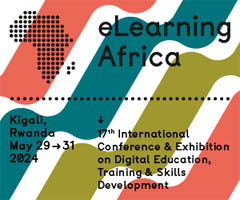Handbook of Artificial Intelligence in Education
 Brussels (BE), August 2023 - The widespread arrival of ChatGPT and other generative AI tools has brought AI into the spotlight in many areas - including education. Governments are concerned about the immediate and long-term effects on employment, and teachers are worried that their jobs may be at risk and that students will use such tools to cheat in assessments. These fears have clouded the fact that AI has proved an effective classroom assistant for many years and that each progress in AI can translate into one for the field of education.
Brussels (BE), August 2023 - The widespread arrival of ChatGPT and other generative AI tools has brought AI into the spotlight in many areas - including education. Governments are concerned about the immediate and long-term effects on employment, and teachers are worried that their jobs may be at risk and that students will use such tools to cheat in assessments. These fears have clouded the fact that AI has proved an effective classroom assistant for many years and that each progress in AI can translate into one for the field of education.
This has been a good moment to produce a Handbook of Artificial Intelligence in Education, and Edward Elgar Publishing wanted a handbook that was not merely technical but also covered the human and societal aspects of the subject. The complete reference is Handbook of Artificial Intelligence in Education. Cheltenham, UK, Edward Elgar Publishing, by du Boulay, B., Mitrovic, A., and Yacef, K. (eds.), 2023.
The picture on the handbook’s cover shows four children, two working together at a laptop, one child working on her own at a laptop, and one child working on paper. There is a screen behind the children that they are ignoring. There is a kind of peaceful focus on the children's faces. There is obviously technology around, but it's the children themselves who dominate the picture. This short description makes use of Chapter 1 of the Handbook.
The earliest AI educational system was Carbonnel's (1970) Scholar that could ask and answer questions about South American geography. It used a symbolic AI knowledge base that could be swapped in or out for other topics, so in principle it was versatile, though clearly not as generic as ChatGPT.
For many years, AIED (Artificial Intelligence in Education) research has focused on developing systems that help the student by providing adaptive feedback and guidance. There have been numerous innovative AIED systems developed to teach various cognitive skills. Other research focused on how to interact with the student, including animated pedagogical agents, simulations, and tutorial dialogues. There has also been a lot of attention paid to collaborative learning.
In addition to systems that help individual students learn, nowadays there is a lot of work in the AIED community on classroom orchestration, with the goal of supporting the teacher in helping students. There is also research on the institutional level, with the goal of improving curricula and improving student success. It was our intention to cover various types of research in AIED, both "old" and "new", with the final chapter looking at future trends.
While looking beyond learner-focused systems to teacher-focused and administrator-focused systems involing learner analytics and educational data mining, we also wanted to explore the context within which AIED operates. So, the latter chapters look at the commercialisation of AIED systems, the ethics of such systems and, crucially, current criticisms of such systems in terms of biases and corporate exploitation among other issues.
The Handbook of Artificial Intelligence in Education covers the history of the use of AI in education, covering the issues outlined above. Some chapters are technical and delve into the detail of these systems. Others are theoretical, looking at issues around human learning, metacognition, and motivation. Others again are more discursive and set AI in Education within its societal context, with a focus on ethics, on commercialisation, and on the dangers datafication and the entry of Big Tech into education. A final section looks at future issues including intelligent textbooks, virtual pedagogical agents, and assessment.









